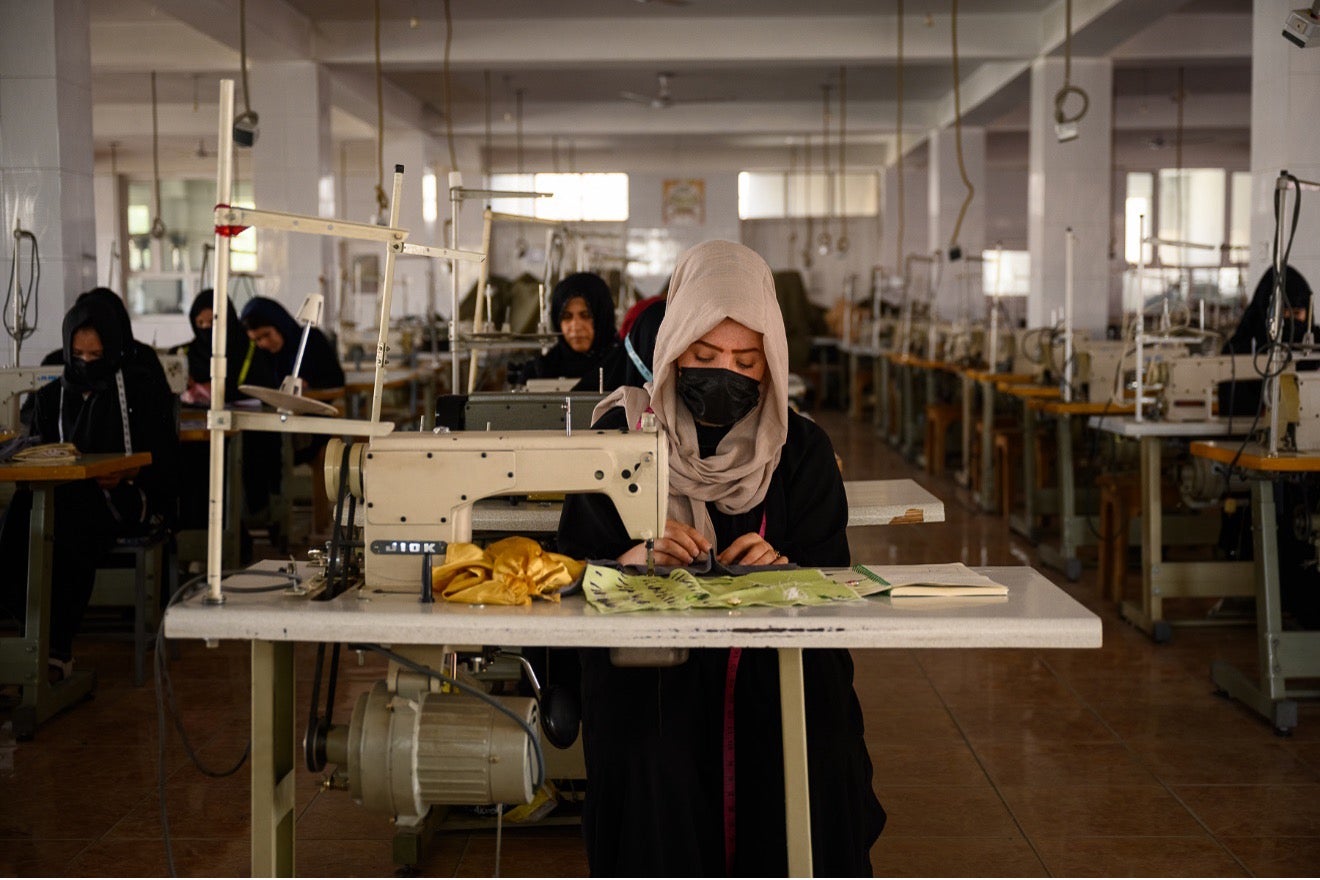Fatima*, a mother of six, has worked within these stifling limitations to build her own business drafting Afghan traditional dresses. Fatima lives in a remote village, and unexpectedly found herself the sole supporter of her family when her husband left and remarried. Determined to make ends meet, she took a loan of 20,000 AFN (around $280) from a village savings group.
According to the local traditions accepted by the de facto authorities, women who are the sole breadwinners of their families or senior female citizen This allows women like Fatima to run businesses independently, in her case renting a shop in the Kabul market to sell her crafts. Not only did the shop give her financial independence, but it also offered a platform for other women to sell their products.
“Each product we sell carries a story of perseverance and hope,” she says.
Working with strict limitations
In Afghanistan, restrictive policies on women’s employment have left only 16.5 percent of women with jobs. The change in power deteriorated the situation, with women being barred from entire sectors of employment, with further limits to their mobility.
On top of these limitations, the fear of arbitrary arrest and deeply ingrained cultural barriers pose significant challenges for women seeking employment.
In 2022, women’s employment dropped by 25 percent, compared to a decline of only seven percent for men. Youth employment also plummeted by 25 percent, with educational restrictions on girls further exacerbating the crisis. This gender disparity in economic participation costs an estimated $1 billion, or five percent of the country’s GDP, worsening poverty and humanitarian crises.
Despite authorities placing restrictions on most jobs, barring girls from secondary and higher education and limiting their movement, home-based businesses and entrepreneurship offer a viable solution for many women, allowing for economic empowerment despite gender-based oppression.

